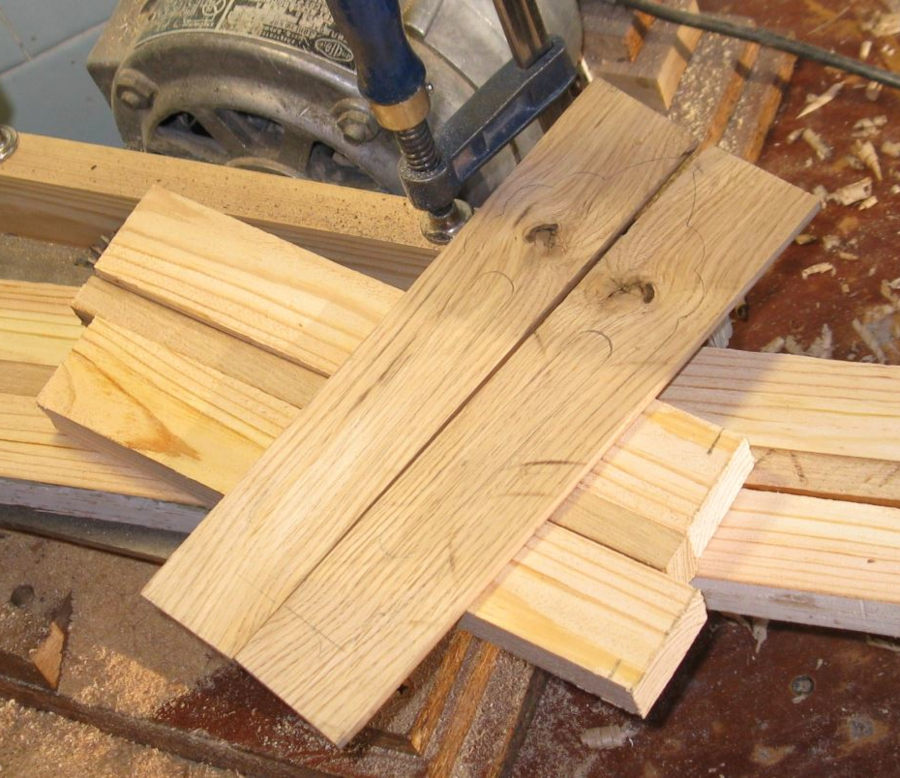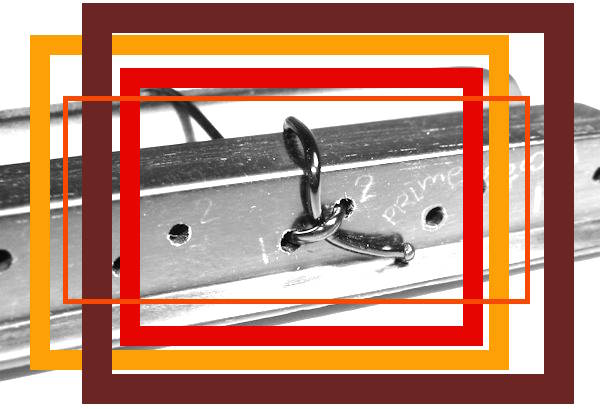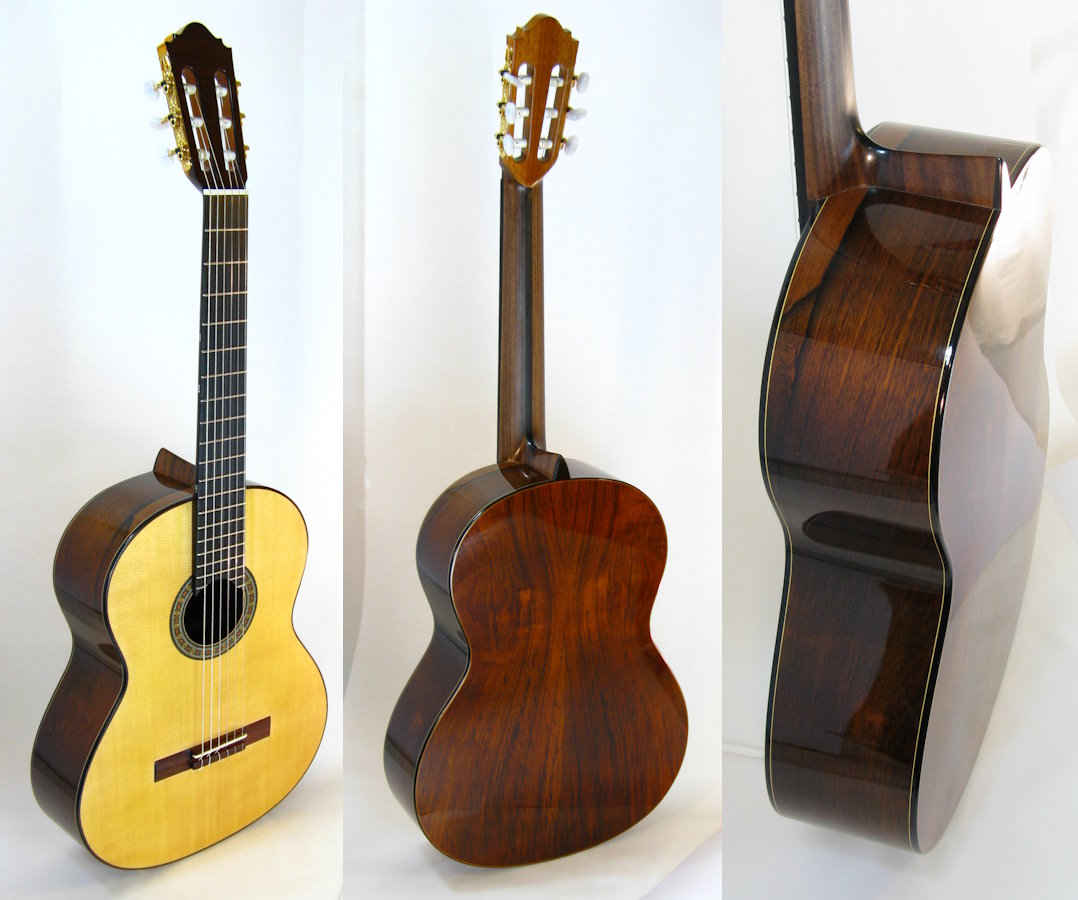
- Written by: Mykola Roodenko
Handmade string winder made from juniper (ялівець) and ebony tree. An addition there is rosewood.

- Written by: Mykola Roodenko
The blanks for the neck were cut out of the door frame in the previous article, and now the task is to make a classic neck out of them. The neck body will be made of ordinary pine reinforced with an oak insert. There will also be an oak overlay on the headstock. I will also make the heel from oak. There will be details with measurements and the assembly sequence of the neck, as well as its installation in the guitar body.

- Written by: Mykola Roodenko
In this article, I will be cutting blanks for the guitar neck. Since my guitar is unusually made of pine, I will also make the neck out of pine. Nonetheless, all the rules for cutting are the same as for regular wood for the guitar neck. The making the heel of the neck will be in the next article. There is a video version of this stage with English subtitles.

- Written by: Mykola Roodenko
In this article, I will be assembling the body of the pine guitar. The door frame jambs are too narrow for the width of the sides, so I'll be constructing each side from two halves. Next, I'll need to assemble the guitar's frame by gluing the sides, blocks and linings together. I'll reinforce the frame with additional vertical braces. Then, all that will be left is to glue the back and the soundboard to the guitar frame, and we'll have the guitar body. Watch the video version #3 and #4 of this stage with English subtitles.

- Written by: Mykola Roodenko
It is very important to saw the members of the fun bracing system and other braces for the guitar strictly along the layers of wood. The layers are clearly visible in two dimensions. However, the third dimension is not visible, but it can be determined by simple splitting. And this invisible grain direction is very important for brace reliability especially on the very low ends.

- Written by: Mykola Roodenko
To make your first guitar and any subsequent ones, you need to find suitable wood. Every guitar project starts with selecting the material. In this project, fate itself chose the guitar material for me. But there's still work to be done to bring this material to its best form. These sticks from the door frame need to be sawn as accurately as possible. Then, it's essential to correctly assemble the cut blanks into parts of the guitar. The pieces need to be fitted together and glued to ultimately obtain the guitar's top, back, and sides.

- Written by: Mykola Roodenko
How to Make your First Guitar and don't get stuck. When making the first guitar, important factors include the cheapness and availability of materials, as well as a clear sequence of actions, a roadmap of the process itself.
Today, it is inexpensive to acquire simple and authentic materials for making a guitar, but even these will cost something. The further away you are from the guitar wood suppliers, the more complex and costly this starter kit will become.
I offer you a simple source of suitable wood for crafting, along with a description of the main stages of crafting a classical guitar.

- Written by: Mykola Roodenko
When you make or repair the fretboard you need fret spacing calculator. In this article I have very nice calculator to locate fret position. Only put in your scale lenght and you get fret spacing table. But I have for you not only distances from the nut to frets but two more columns in table. First of all spacing between adjacent frets and special one distance from one chosen fret to other ones. This can be very helpful for understanding what the scale lenght on your guitar for example. You can calculate any guitar scale length up to any number of frets. It might not only be for guitars, as it's simply a calculator for the 12-tone equal temperament tuning.

- Written by: Mykola Roodenko
There are a pair of rules to properly tie guitar strings on a classical bridge with one hole for each string.

- Written by: Mykola Roodenko
On your guitar, there are two holes for securing each string on the bridge. Awesome! But how do you tie the string through two holes? There are several ways, but some of them may result in the string slipping out and hitting the body painfully. I've researched this issue and will show you how to properly tie the string through two holes in the bridge.

- Written by: Mykola Roodenko
The principle of fastening strings on the tuning peg of the tuning mechanism is similar to attaching them to a bridge – the string should be gripped with a tightening loop. The stronger the strings are pulled, the tighter the loop holds. Undoubtedly, the number of windings around the peg has some mening because it provides additional friction that holds the string.

- Written by: Mykola Roodenko
Changing guitar strings can be so annoying because it requires a long time to turn the pegs of the tuning mechanism. But if you have a special artisanal string winder made of precious wood, then changing guitar strings becomes a quick and enjoyable process.





